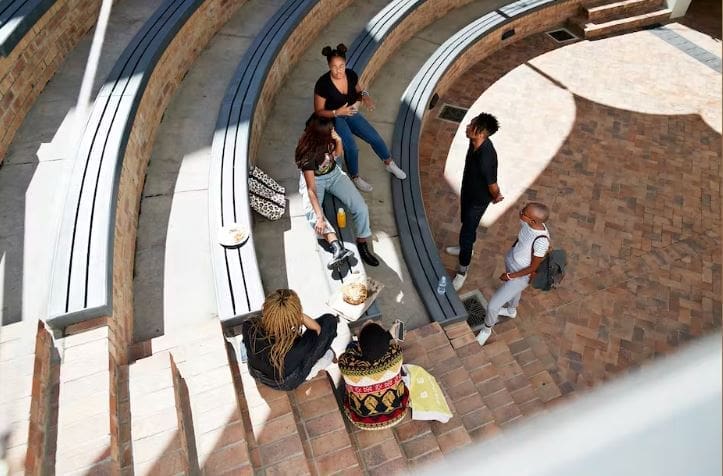It has been seven years since students in South Africa began protesting in a bid to “Africanise” the country’s university curricula. They viewed what they were learning as too neoliberal – characterised by Western values pushing the marketisation of education. They wanted universities to become more relevant to students in an African country and more connected to their own lives.
The students’ calls propelled “decolonisation” to the forefront of national (and even international) debate. Decolonisation in the university context involves dismantling the institutional practices and policies that uphold white supremacist, Western values. Since then there have been various initiatives at most of the country’s 26 public universities designed to change what students learn and how.
Every academic has their own opinion and their own approach. Mine, as a university educator who lectures future teachers, has been to adopt a teaching-learning approach called defamiliarisation.
The idea of defamiliarisation was coined by Russian literary theorist Viktor Shklovsky. It is a process of looking at things differently through art, poetry, or film so that you don’t see them automatically; Shklovsky said that you could look at something you know several times without really analysing it.
I have researched and used defamiliarisation in my teaching since 2015, finding it a good place to contribute towards disrupting the sort of neoliberal curriculum student protesters opposed. If a curriculum doesn’t consider the humanistic side of learning, the system and institution can treat students as a form of human capital. That ultimately changes education from a public good to a commodity.
By approaching my classes using defamiliarisation, I have been able to help students think beyond the usual stories about history. Crucially, they have been put in charge of their learning. In this way, education is shored up as a public good.
A space to speak openly
So, what does defamiliarisation look like in practise? One example is an activity a colleague and I designed: we asked a group of students, as part of a lesson, to draw how they saw themselves and how they felt about being taught in English at the university. While English is widely spoken in South Africa, most of our students speak isiXhosa as their first language.
Even though the question was about the university, many of the students’ drawn answers were about society and their communities in reference to the university. These examples showed that, for these students, the community and the university are not separate. The question seemed to bring up deeper issues that neither the students nor I were aware of at the time.
For example, one of the students I talked to about her drawing creatively explained how her feelings were connected to her beliefs, culture, and context pertaining to the dominant and gendered power relations in her community, and at the school she had attended.
She drew two portraits of herself: on the left, a false representation at the school she attended, depicting the aesthetic beauty and success that came with being able to speak English fluently and with excellent grades; on the right, a portrait of her dormant natural beauty that held on to her culture and true identity.
Her drawing showed how she saw herself and how she thought the rest of society saw her. Her drawing showed her race, language, culture, gender, and a false representation of who she was in her school environment.
The student said that in her community, people often asked her about her race because she spoke in a dialect that she may have picked up at a former Model C (whites only during apartheid) school, and that was often associated with “white culture” in her community.
The defamiliarisation approach allowed this student to make her peers and me aware of her socio-cultural context and, more importantly, the challenges and subtleties of her identity and how she felt about them. By doing this activity, she, like many of her peers, could talk about herself creatively and effectively.
This approach developed students’ openness, compassion, sympathy and responsibility.
You could say that defamiliarisation gave the students the freedom to become their own narrators. It also allowed them to understand what their peers were going through and show compassion for them around instances of marginalisation in society. This, in my opinion, is crucial for aspiring educators to fully comprehend the range of experiences and viewpoints held by learners from a variety of socioeconomic backgrounds.
Educators benefit, too
I believe this kind of teaching was valuable and essential to assist students in developing the knowledge, skills, attitudes, and behaviours needed for critical global citizenship. It allowed them to communicate openly about victimisation and unjust treatment in South Africa.
Even though in some instances it made them feel uncomfortable, defamiliarisation was met with mostly favourable reactions from students. It helped them to open up about the challenges in their own lives. And I still use the approach today, mostly through the medium of film. For instance, I showed the movie Krotoa to a different class. It examines the impact of Dutch colonisation on the culture and identity of the indigenous Khoi people of the Cape in the 17th century.
Defamiliarisation helps educators, too. I have reflected on my role as a university lecturer and, frankly, to question aspects of my teaching that seem dominant and obvious to my students but are just habitual to me. Learning about my students’ real-life experiences and sentiments helped me empathise with them and value their individuality. It helped us to connect in a meaningful way as equals.
Using this approach is a way for academics to return to the basics. That’s crucial if universities are to offer a curriculum that centres students’ needs as the primary focus of learning.![]()
![]()
Zayd Waghid, Associate professor, Cape Peninsula University of Technology
This article is republished from The Conversation under a Creative Commons license. Read the original article.
